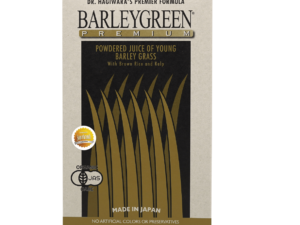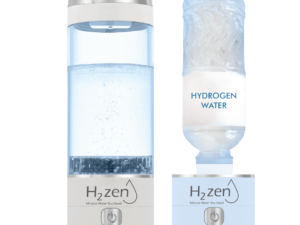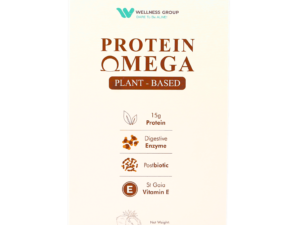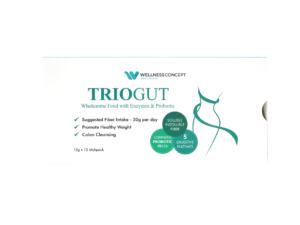In Malaysia, the quest for natural health solutions has led to a surge in popularity of superfoods like barley grass and wheatgrass. Did you know that these young grasses are packed with nutrients and antioxidants, offering a potent boost to overall wellbeing? Both are rich in chlorophyll, a green pigment that not only helps plants absorb sunlight but also provides numerous health benefits.
As Malaysians increasingly seek out natural ways to enhance their health, understanding the unique benefits of barley grass and wheatgrass is crucial. For more information on these products, you can contact Wellness Group at WhatsApp number: +60123822655.
Key Takeaways
- Both barley grass and wheatgrass are nutrient-dense superfoods rich in antioxidants.
- They offer numerous health benefits, including high chlorophyll content.
- Understanding their differences can help Malaysians make informed health choices.
- These grasses can be a valuable addition to a daily health routine.
- Scientific evidence supports the benefits of incorporating these superfoods into one’s diet.
Understanding Superfoods in Malaysian Health Culture
Superfoods have gained immense popularity in Malaysia as people look for natural ways to enhance their overall health and well-being. One of the key aspects of maintaining good health is keeping the body’s acid-alkaline balance in check. Consuming a diet rich in alkalising foods is crucial for combating everyday acid production, and two of the best options are Barley Grass and Wheat Grass.
The Rising Popularity of Grass Supplements in Malaysia

Click to LEARN MORE
The trend towards healthier living in Malaysia has led to an increased interest in grass supplements, driven by several factors. Some of the key reasons include:
- Rising healthcare costs, prompting Malaysians to seek preventative health measures through natural supplements.
- The growing prevalence of lifestyle diseases, such as diabetes and heart conditions, which has created a greater interest in natural supplements that may help manage these conditions.
- Environmental concerns, including air pollution in major cities, driving interest in detoxifying supplements that support the body’s natural cleansing processes.
Why Malaysians Are Turning to Natural Supplements
Malaysians are turning to natural supplements like barley grass and wheatgrass because they offer a holistic approach to health that aligns with traditional Malaysian healing practices. These superfoods are rich in antioxidants and support the immune system, contributing to overall health. The preference for natural supplements is also driven by a desire to avoid pharmaceutical interventions and maintain a healthy body.
What is Wheatgrass?
As a young, sprouted grass of the wheat plant, wheatgrass is rich in vitamins, minerals, and antioxidants. Wheatgrass is harvested within the first few weeks of growth, typically between 7 to 10 days, when it is at its nutritional peak.
Origin and Cultivation
Wheatgrass is typically grown indoors or in controlled environments to optimize its nutritional content. It requires careful cultivation, involving precise watering, temperature control, and often, organic practices to ensure high quality.
Nutritional Profile
Wheatgrass is renowned for its dense nutritional profile, including vitamins A, C, and E, along with minerals like iron, calcium, and potassium. It is also a rich source of antioxidants and contains a significant amount of fiber and protein.
Processing and Sales
Wheatgrass can be consumed fresh or in various processed forms, such as juice, powder, tablets, or capsules. The processing methods, including freeze-drying, help preserve its nutritional value. In Malaysia, wheatgrass products are available in health food stores, pharmacies, and some supermarkets.
Malaysian consumers can find wheatgrass in various forms, including fresh juice, frozen juice, powder, tablets, and capsules. The choice of form often depends on personal preference, lifestyle, and the desired health benefits. When purchasing wheatgrass products, it’s crucial to check for quality certifications and follow proper storage recommendations to maintain potency.
Key Health Benefits of Wheatgrass
Wheatgrass has become a sought-after supplement for those looking to enhance their overall health and wellbeing. With its rich nutritional profile, it offers numerous benefits that can be particularly advantageous for individuals in Malaysia.
Detoxification Properties
Wheatgrass is known for its detoxification properties, which help in cleansing the body of toxins. The antioxidant properties of wheatgrass contribute to its ability to support the body’s natural detox processes. Regular consumption can aid in removing harmful substances from the body.
Immune System Support
The immune-boosting properties of wheatgrass make it an excellent supplement for supporting overall health. It is rich in nutrients that help in strengthening the immune system, thereby protecting against various infections and diseases.
Digestive Health Improvement
Wheatgrass can also contribute to improved digestive health. Its nutritional content helps in soothing and healing the digestive tract, promoting a healthy gut.
Antioxidant and Anti-inflammatory Effects
The antioxidant properties of wheatgrass play a crucial role in protecting the body against oxidative stress and inflammation. By neutralizing free radicals, wheatgrass helps in reducing the risk of chronic diseases such as heart disease and diabetes, which are prevalent in Malaysia. The anti-inflammatory effects of chlorophyll in wheatgrass may also help in reducing inflammation, supporting the body’s natural defense mechanisms.
- Wheatgrass contains powerful antioxidants that help neutralize free radicals, potentially slowing the aging process.
- The anti-inflammatory properties may help reduce chronic inflammation linked to various health conditions.
- For Malaysians with active lifestyles, wheatgrass can help reduce exercise-induced inflammation and support faster recovery.
- The antioxidant content supports skin health, beneficial in Malaysia’s tropical climate.
- Regular consumption may protect against cellular damage caused by environmental factors.
By incorporating wheatgrass into their diet, Malaysians can potentially enhance their overall health and wellbeing, leveraging its numerous health benefits.
What is Barley Grass?
Barley grass, known for its high nutritional value, is increasingly being sought after by Malaysians looking for natural health supplements. It is available in various forms, including juice, powder, tablets, and capsules.
The versatility of barley grass powder makes it a popular choice among consumers. It can be easily incorporated into daily meals or beverages, providing a convenient way to boost nutrient intake.
Origin and Cultivation of Barley Grass

Click to LEARN MORE
Barley grass is typically cultivated in controlled environments to ensure optimal nutritional content. It is harvested at the young stage when it is rich in vitamins and minerals.
Nutritional Profile of Barley Grass

Click to LEARN MORE
Barley grass is rich in antioxidants, vitamins, and minerals. It contains a high amount of superoxide dismutase, an enzyme that helps protect cells from damage.
How Barley Grass is Processed and Sold
The processing of barley grass powder involves careful drying at low temperatures, with freeze-drying being the preferred method to preserve its nutritional content. In Malaysia, it is sold in various forms, with grass powder being the most common due to its shelf stability.
Key Health Benefits of Barley Grass
Rich in antioxidants and other beneficial compounds, barley grass offers several health advantages. Its nutritional profile makes it a valuable addition to a healthy diet, potentially supporting various aspects of health.
Blood Sugar Regulation
Barley grass has been found to have a positive effect on blood sugar levels. For those interested in learning more about how barley grass can help with blood sugar regulation, further information is available. The antioxidants and other nutrients in barley grass may help in maintaining healthy blood sugar levels.
Cardiovascular Health Support
The nutrients present in barley grass, including antioxidants and fiber, may contribute to supporting cardiovascular health. By potentially reducing oxidative stress and inflammation, barley grass can be a beneficial component of a heart-healthy diet.
Liver Function and Detoxification
Barley grass is believed to support liver function and aid in detoxification processes. Its chlorophyll content is thought to help in removing toxins from the body, supporting overall liver health.
Anti-cancer Potential
Barley grass is recognized for its potential anti-cancer properties, primarily due to its rich content of antioxidants, phytochemicals, and certain enzymes. These components may help protect cells from DNA damage and reduce oxidative stress, a known contributor to cancer development. Regular consumption of barley grass may support overall cellular health and resilience against factors that contribute to cancer development.
Barley Grass vs. Wheatgrass Benefits: A Comparative Guide for Malaysians
For those in Malaysia looking to incorporate superfoods into their diet, understanding the differences between barley grass and wheatgrass is crucial. Both have gained popularity for their nutritional benefits, but they cater to different health needs and preferences.
Nutritional Comparison
Wheatgrass and barley grass have distinct nutritional profiles. Wheatgrass boasts higher protein content, making it suitable for individuals looking for a high-protein supplement. On the other hand, barley grass is richer in fiber and has a different fatty acid profile, which may appeal to those monitoring their dietary fat intake.
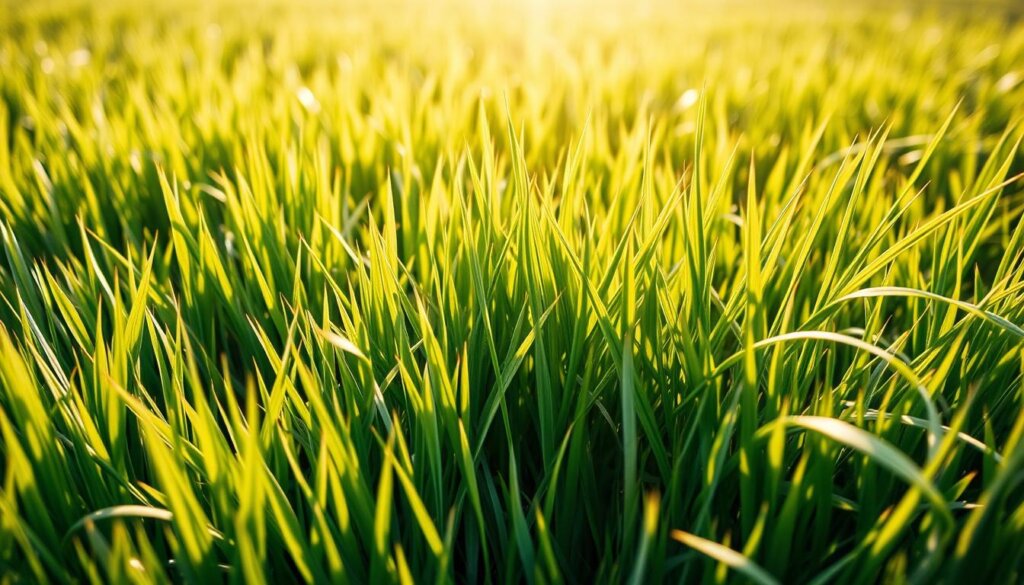
Taste and Palatability Differences
The taste and palatability of wheatgrass and barley grass differ significantly. Wheatgrass has a stronger, more grassy flavor, while barley grass is often described as milder and slightly sweet. This difference can influence consumer preference, especially for those incorporating these grasses into their daily diet.
Digestibility and Absorption
Both wheatgrass and barley grass are known for their ease of digestion, but some individuals may find one more tolerable than the other. Barley grass is often considered gentler on the digestive system, making it a preferable choice for those with sensitive stomachs.
Suitability for Different Health Conditions
The suitability of wheatgrass versus barley grass depends on specific health conditions. For instance, wheatgrass may be more beneficial for immune support and detoxification due to its high chlorophyll content. Conversely, barley grass is noted for its cardiovascular benefits and blood sugar regulation. Individuals should consider their health goals when choosing between the two.
- Wheatgrass is ideal for Malaysians focused on athletic performance or muscle building.
- Barley grass is beneficial for those concerned with cardiovascular health and blood sugar management.
- Both grasses are effective for detoxification, with wheatgrass having a slight edge.
- Malaysians with digestive issues may prefer barley grass for its gentle support.
How to Incorporate These Superfoods into Malaysian Diet
Incorporating wheatgrass and barley grass into your diet can be a game-changer for Malaysians looking to boost their health naturally. Both superfoods offer numerous health benefits, from detoxification properties to immune system support.
Creative Ways to Consume Wheatgrass
Wheatgrass can be consumed in various forms, making it easy to incorporate into daily routines. One popular method is juicing fresh wheatgrass leaves. For those who find the taste too strong, mixing it with other juices like orange or apple can help mask the flavor. Wheatgrass powder can also be added to smoothies or used as a supplement in capsule form.
Delicious Barley Grass Recipes with Malaysian Twist
Barley grass can be easily incorporated into Malaysian cuisine. One idea is to add barley grass powder to traditional Malaysian dishes like laksa or curry. It can also be mixed into coconut milk-based desserts for a nutritious treat. Another option is to blend barley grass powder with local fruits like durian or mango for a refreshing smoothie.
Recommended Dosage and Timing
For optimal benefits, it’s recommended to start with a small amount (1 teaspoon of powder or 30ml of juice) and gradually increase the dosage. Both wheatgrass and barley grass are best consumed on an empty stomach, ideally in the morning. For those with busy schedules, dividing the daily intake into morning and afternoon doses can help maintain energy levels throughout the day.
Availability and Quality of Grass Supplements in Malaysia
With the growing interest in health supplements, Malaysians can now choose from a wide range of wheatgrass and barley grass products. The market offers various options, from fresh juice to powdered supplements, catering to different consumer preferences.
Where to Purchase Quality Products
When looking for high-quality wheatgrass and barley grass supplements in Malaysia, it’s essential to choose reputable sources. Consumers can find these products in health food stores, specialty nutrition shops, and online marketplaces. For instance, Wellness Group, a trusted health supplement provider, operates from Monday to Saturday, offering a range of products.
Their business hours are as follows: Monday to Friday, 9:30 am – 6:30 pm, and Saturday, 10 am – 5 pm.
Price Comparison and Value for Money
Comparing prices among different brands and products is crucial to ensure value for money. The cost of wheatgrass and barley grass supplements in Malaysia can vary significantly based on factors like product form, brand reputation, and certification. Generally, organic and certified products may be pricier but offer better quality and efficacy.
How to Identify Authentic Products
To identify authentic wheatgrass and barley grass products, consumers should look for clear labeling that includes the source of the grass, processing methods, and nutritional information. Certifications from recognized bodies like USDA Organic or Malaysia Organic (myOrganic) are indicators of quality. Additionally, the packaging should protect against humidity, which is particularly important in Malaysia’s tropical climate.
By being aware of these factors, Malaysians can make informed decisions when purchasing wheatgrass and barley grass supplements, ensuring they receive high-quality products that meet their health needs.
Special Considerations for Malaysian Consumers
For Malaysians looking to incorporate grass supplements into their health regimen, several special considerations come into play. The unique climate and cultural context of Malaysia can significantly impact the choice and use of these supplements.
Climate Impact on Supplement Storage
Malaysia’s tropical climate means that the storage of grass supplements is crucial to maintaining their potency. Properly stored powder forms of barley grass or wheatgrass can last significantly longer than fresh or liquid forms. Consumers should keep these supplements in cool, dry places to maximize their shelf life.
Halal Certification and Religious Considerations
For many Malaysian consumers, halal certification is an important factor when choosing health supplements. It’s essential to look for products that have been certified by recognized Malaysian halal certification bodies. This ensures that the supplements comply with Islamic dietary laws.
Integrating with Traditional Malaysian Remedies
Grass supplements can complement traditional Malaysian herbal remedies like jamu. The alkalizing and detoxifying properties of wheatgrass and barley grass may enhance the effectiveness of these traditional remedies. Consumers are advised to consult with practitioners familiar with both modern nutritional science and traditional Malaysian medicine to guide the integration.
| Consideration | Importance | Action |
|---|---|---|
| Climate | High | Store in cool, dry places |
| Halal Certification | High for Muslim consumers | Look for recognized halal certification |
| Integration with Traditional Remedies | Medium | Consult with knowledgeable practitioners |
For those interested in premium barley grass supplements, visiting Wellness Group’s website can provide more information on high-quality products suitable for Malaysian consumers.

Conclusion: Making the Right Choice for Your Health Needs
When deciding between barley grass and wheatgrass, it’s essential to consider individual health objectives. Both offer impressive health benefits for Malaysians, with the choice depending on specific goals and preferences. For personalized advice, consult with nutrition experts at Wellness Group by contacting them at +60123822655. Consistency is key; incorporating these superfoods into your daily routine yields better results. Whether you choose wheatgrass, barley grass, or both, they can enhance overall health and energy levels. Visit Wellness Group during business hours for more information.
What are the main differences between Barley Grass and Wheatgrass in terms of nutritional content?
Barley Grass contains a higher amount of superoxide dismutase, an antioxidant enzyme, and has a slightly different amino acid profile compared to Wheatgrass. Wheatgrass, on the other hand, has a higher chlorophyll content, which is beneficial for detoxification.
Can people with celiac disease consume Barley Grass or Wheatgrass?
Individuals with celiac disease can consider consuming Barley Grass as it is gluten-free. However, Wheatgrass is also gluten-free, but some processing methods might contaminate it with gluten. It’s essential to choose products from manufacturers that follow strict gluten-free protocols.
How do Barley Grass and Wheatgrass affect energy levels?
Both Barley Grass and Wheatgrass are rich in nutrients and can help boost energy levels. The high concentration of vitamins, minerals, and antioxidants in these grasses can help reduce oxidative stress and improve overall health, leading to increased energy.
Are there any differences in the taste and palatability of Barley Grass and Wheatgrass?
Yes, Barley Grass is often described as having a milder taste compared to Wheatgrass, which can be quite earthy and strong. The taste difference can affect how people choose to consume these supplements, with some preferring the milder taste of Barley Grass.
Can Barley Grass or Wheatgrass help reduce inflammation?
Both Barley Grass and Wheatgrass have anti-inflammatory properties due to their high content of antioxidants and other nutrients. They can help reduce inflammation in the body, which is beneficial for overall health and can be particularly helpful for people with chronic inflammatory conditions.
How should I choose between Barley Grass and Wheatgrass for my health needs?
The choice between Barley Grass and Wheatgrass depends on your specific health needs and preferences. If you’re looking for a product with a higher superoxide dismutase content, Barley Grass might be the better choice. For a product with a higher chlorophyll content for detoxification, Wheatgrass could be more suitable.


